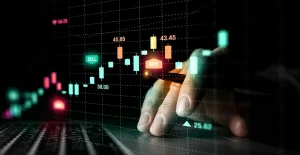Maximizing ROI at Trade Shows

At tradeshows, you need an ROI (return on investment) not just to get your company name out in the air and hope that you’re going to sell some products, but to be able to produce numbers and data behind what you say.
To ensure successful events, it is important to set specific goals before the event in question and to use CRM software as a means to measure outcomes both during and after an event has taken place.
Invest in a high-quality booth
Basically, when deciding to attend a trade show,and you want to get the maximum profit from it, it is high time that you spent some money on getting a high quality booth.But of course,a red ribbon is just a red ribbon, if you don’t have many visitors to go to this entrance point and this obviously won’t maximise your return.What is needed here is more than just it.
To ensure a good return on your investment it is imperative that you establish quantified objectives and record key performance indicators (KPIs) to determine whether the trade show was successful from its own standpoint and equip you to make decisions about the next trade show.
While collecting qualified leads might be the easiest way to prove the ROI of an event, like it or not, it is only one metric to consider. Awareness-based metrics such as badge scans or meetings held are also important to measure. And finally, closed-ended questions need to be designed in order to qualify visitors to the booth and make sure that sales teams are only following up on sales-ready or warm-leads.
Draw more attendees to your booth and increase engagement with your brand through interactive experiences. From learning activities to play games that teach them something about the product and process to immersive experiences – all these things make a memorable first impression and build relationships with new customers.
Get the word out about your appearance
Other than meeting people whom your brand might like to do business with, the other aim of any trade show success is to add brand value by visibility and consistency – having a clear pre-show strategy can make your brand achieve this goal.
Promote Your Appearance on Social Media | Provide Map/Landmarks at Event
Measuring return on investment (ROI) will be more direct if sales or purchase orders are occurring directly at the booth/event, and more difficult for businesses with long sales cycles such as business-to-business (B2B) companies. Either way, it’s important to measure and improve your activity so it impacts your bottom line and is worthy of an investment – otherwise, maybe it’s time for another approach?
Reach out to your target audience before the event
For example, you can measure trade show ROI early by setting very clear objectives that you can compare to: ‘Were my and my company’s trade show efforts worth my time and money?’
The right pre-trade show marketing is crucial too – find pain points of your target audiences and address them with a message touting the benefits your product or service delivers.
They should create internal processes to make sure that proper leads are fed to sales; and track indirect benefits like brand awareness or networking – these might not be quantified in strict monetary terms but can support the long-term development of the business. Ideally, all leads should be tracked in the company’s customer relationship-management (CRM) system, so that marketing and sales can collaborate more effectively in tracking memorandum of understanding and the number of leads from attendance.
Measure your success
The value of a well-planned trade show can be measured by an often-reported item – the return-on-investment (ROI) – that a company makes from its trade show campaigns, and that way, they can allocate their funds and energies correctly when holding a trade show, or choosing a partner for their next trade show or another campaign.
When it comes to measuring ROI for trade shows however, the ultimate KPI based on revenue from every lead-generated sale might not be possible and that’s OK, but clear objectives and KPIs should be set that still aid in keeping the show on track with company goals as success or failure hinges on it.
Technology such as digital badge scanners or tablet kiosks can be used to efficiently capture a prospect’s full contact details and can help you collect the insights needed to respond to leads in a timely manner and get them into your sales cycle the minute your show has closed its doors. Games, giveaways and contests can boost participation and result in more sales-ready leads coming out of an event. That data can then be used to help determine the most effective booth designs, engagement strategies and lead-generating theories going forward.







